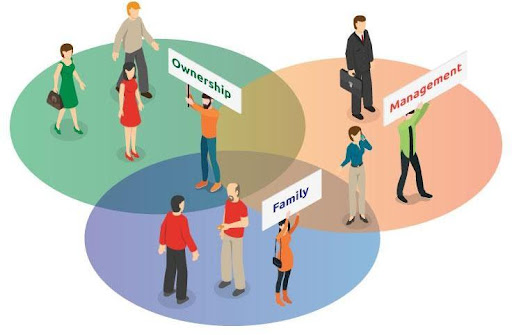
The majority of the businesses in the world are family owned. These family-owned businesses contribute significantly to the GDP of their respective nations. Hard work, the spirit of entrepreneurship, keeping family first, focus on customer relationship management, etc. are some of the fundamental drivers of the success of the family businesses.
The family-owned businesses have major strengths as compared to other businesses. Multiple skills due to several family members available in the family, and mutual trust compound for business growth.
As the family grows, so do the complexities. The same applies to business – the larger it becomes, the more complex it gets.
Therefore, on the flip side, employment of the family members in the business, generation transition issues, succession, internal family conflicts, wealth management, etc. pose a major threat to the survival, continuity, and expansion of these family businesses.
Statistically, only 30% of family businesses are able to pass on the baton successfully to the next generation. Just 10% of the family-owned businesses move on to the third generation.
Making Family Businesses last for Generations, is both an art and a science. It’s not complex, but much-needed discipline and paradigm shift are needed on part of the family members.
It is an absolute must for family-owned businesses to survive for the following reasons:
The survival of the family-owned business is the cumulative responsibility of all the generationof the family members.
Family business cases are challenging to analyze as they are wrapped around the 3 key dimensions: family, the business, and the ownership.
It is important to understand the dilemmas and paradoxes faced by the family businesses in minute detail, before looking out for solutions. The tools help in understanding the prevailing situations in the family and the business.
The tools are useful for families in business and advisors to family businesses, as they deal with complex issues arising from family conflict and business issues in family-owned businesses. Tools focusing on studying the family business as a whole are separate from those which are family-focused and business–focused.
Tools focusing on the family business system in entirety, help in understanding the history of the business, business vision, and role of key stakeholders.
The key tools for analyzing the family business in totality are:
In this tool, the total family business system is shown as 3 overlapping circles of family members, management, and ownership. This fundamental tool helps to understand the current roles and perspectives of all the key internal stakeholders in the family-owned business
In this tool, each circle is converted into a horizontal axis and evaluates its stages over the journey of the family business
The entry and exit of the family members into the 3 circles are not defined. This tool helps set up the criteria so that the family members are aware and can prepare themselves well in advance

This tool aids the Family Business in deciding their business goals of growth, profitability, and family goals of harmony, togetherness, etc. by prioritizing or balancing business or family
This tool is a visual representation of the family tree with entries, exits, and the relationships between the various members
This tool aids in preparing the business organogram, representing the various family members and employees in the business, their designations, reporting, and their owners if any
Succession tool helps understand and set up criteria for the exit, succession planning, and next-generation focus and commitment to the business
It helps to expand the business market share through innovations and venturing into blue oceans

The Family Business Analytical Tools and Techniques help understand the challenges faced by the family, business, and ownership from different perspectives.
Upon analysis, it has been found that Family businesses face the following common challenges:
The family members should:
Making family businesses last for generations needs a paradigm shift and discipline on a continual basis. Families in business need to have a well-structured Family Governance System in place.
Family members MUST adhere to the following to survive, grow and continue for generations:
Family Businesses following the above governance systems have a very high probability of continuing from generation to generation.
There are immense benefits of well-governed and structured family businesses:
ADDVALUE is one of the leading Family Business Advisors assisting family businesses make their businesses last for generations, under the guidance of expert Family Business Consultants.